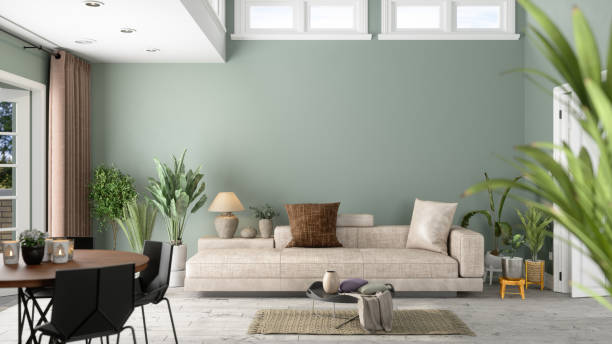
Dust in your home can come from outdoors, pets, dead skin, and fibers. Recognizing these sources helps you focus your cleaning efforts effectively for a cleaner and healthier living space.
Keeping windows closed during windy days is crucial. Outdoor pollutants and dust can enter quickly. Using door mats and removing shoes can also reduce incoming dust significantly throughout your home.
Your pets can carry dust and dander indoors. Grooming them regularly and keeping their bedding clean prevents extra particles from spreading on furniture, floors, and air.
Textiles and upholstery shed tiny fibers constantly. Wash linens often and vacuum furniture weekly to control buildup. Minimizing fabric clutter helps reduce dust accumulation in every room.
Cleaning consistently is better than occasional deep cleans. Establish a weekly schedule to handle high-traffic areas, and don’t forget neglected spots like vents, blinds, and light fixtures.
Microfiber cloths are highly effective for trapping dust. Unlike cotton rags, microfiber grabs and holds particles instead of spreading them around. Keep several on hand for quick daily wipes.
Vacuuming with a HEPA filter is essential. Standard vacuums can release fine dust back into the air. A HEPA filter ensures those particles stay trapped and removed from your environment.
Change bedding and pillowcases twice weekly. These attract skin cells and dust mites. Regular washing in hot water keeps allergens at bay and contributes to a dust-free bedroom.
High humidity allows dust mites to thrive. Use a dehumidifier to keep moisture levels below 50%. Dry air also keeps particles from clumping and sticking to surfaces around your home.
Air purifiers with HEPA filters are great investments. They catch airborne particles before they settle. Place them in bedrooms or high-traffic areas for continuous air cleaning benefits.
Ceiling fans and HVAC vents can spread dust. Clean them monthly and change air filters regularly. This helps maintain better air circulation and a cleaner home overall.
While planning a trip or seasonal cleaning, consider a rent a car service for moving large items or hauling cleaning gear. It offers flexibility while deep cleaning and organizing clutter.
The more items you have, the more places dust can hide. Minimalism helps. Keep flat surfaces clear and use closed storage options to prevent dust from settling on exposed belongings.
Open shelves look appealing but attract dust faster than cabinets. If you prefer open display areas, commit to dusting them at least twice a week to avoid buildup.
Boxes, bags, and miscellaneous items under beds and couches trap dust. Store items in sealable containers or vacuum those spaces frequently to maintain cleanliness beneath furniture.
Consider rotating decorative items. Limit the number of figurines or displays to make weekly cleaning easier. Smart decorating choices contribute to a dust-controlled home environment.
You should dust visible surfaces at least once a week and hidden areas like vents and baseboards every two weeks.
Yes, air purifiers with HEPA filters trap airborne dust particles and significantly improve indoor air quality.
Use a microfiber cloth. It traps dust instead of scattering it, unlike traditional dusters or dry rags.
Yes, clutter collects dust easily. Keeping surfaces clear reduces the amount of dust that can settle in your home.
It could be due to dirty air filters, open windows, or infrequent vacuuming. Addressing these can help reduce recurring dust.